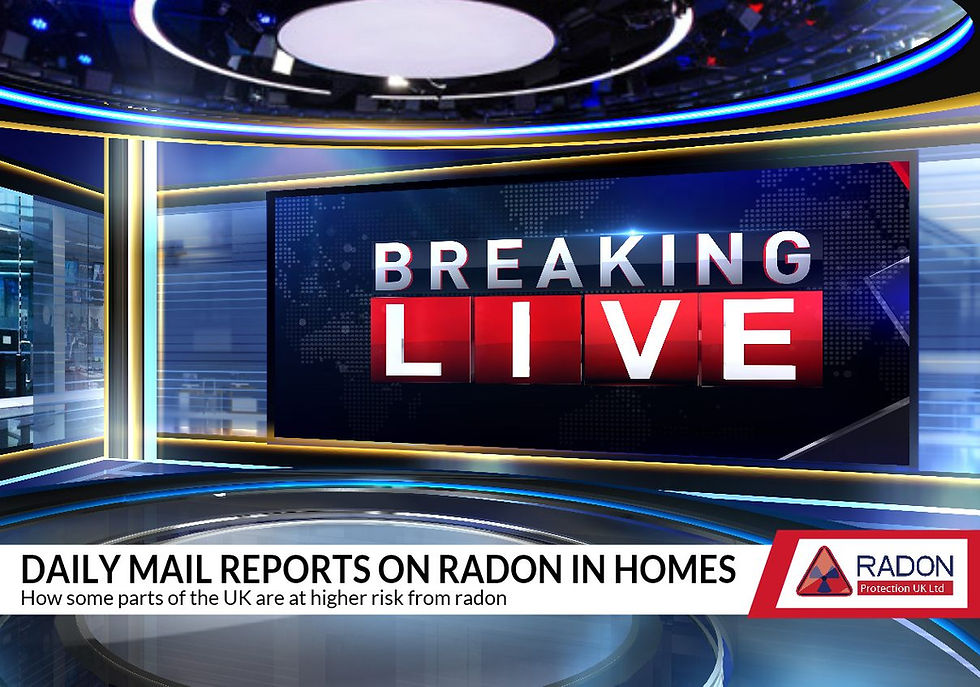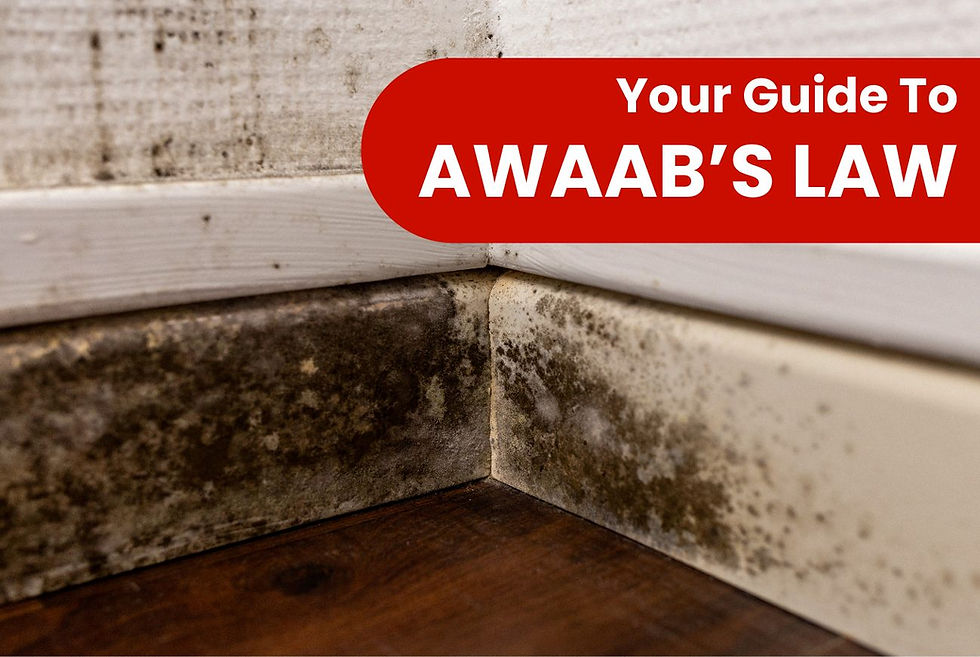An article written by the owner of Radon Protection UK
- sarah11342
- Sep 7
- 3 min read
How Dangerous is Radon for UK Homeowners?
After three decades watching digital trends emerge and fade, I've learned that the most dangerous threats are often the ones hiding in plain sight. Radon gas epitomises this perfectly. It's the second leading cause of lung cancer in Britain, responsible for over 1,100 preventable deaths annually, yet many UK homeowners haven't given it a moment's thought.
The parallels between invisible digital risks and invisible household dangers are striking. Both require data-driven assessment, both demand proactive monitoring, and both can be managed effectively once you understand the underlying patterns.
The Geography of Risk:
The biggest mistake homeowners make is assuming radon risk is uniform across Britain. It absolutely isn't. The UK Radon map is dictated entirely by geology, creating a patchwork of risk that varies dramatically by postcode.
Cornwall, Devon, parts of Derbyshire, Rutland, Oxfordshire, Northamptonshire, and certain regions of Scotland and Wales sit on granite and uranium-rich rock formations. As uranium naturally decays, it releases radon gas that seeps upward from the ground. Modern building practices that prioritise energy efficiency and airtight construction can trap this gas, allowing dangerous concentrations to build up inside homes.
The UK Health Security Agency provides an online postcode checker that should be every homeowner's first port of call. This targeted, location-specific approach is far more sensible than blanket worry about a problem that might not even affect your area.
Understanding the Real Health Impact:
The science is straightforward but requires clarity over alarmism. Long-term exposure to high radon concentrations means inhaling radioactive particles that decay in your lungs, releasing bursts of energy that can damage DNA and trigger lung cancer.
The risk amplifies dramatically for smokers. The combined effect isn't just additive, it's synergistic. Non-smokers face increased risk too, but the data shows smoking plus radon exposure creates a particularly dangerous combination.
Here's the crucial point: this isn't an immediate threat. Radon-related health problems develop over years or decades of exposure. That gives you plenty of time to assess your situation and act proportionately.
Testing and Solutions That Actually Work:
The good news is radon problems are entirely solvable. The process is straightforward, affordable, and highly effective.
Testing costs around £39-£49 for certified passive dosimeter kits. You place small pods in your living room and bedroom for three months to get accurate average readings that account for daily and seasonal fluctuations. The lab analysis provides results in Becquerels per cubic metre, with 200 Bq/m³ being the UK action level.
If your results are high, don't panic. The most common solution is installing a radon sump: a small void under the floor connected to a pipe that runs to an outside wall, topped with a quiet fan that continuously draws radon from the ground and expels it safely outside before it can enter your home.
It's simple, elegant engineering that works remarkably well. Other measures include improving underfloor ventilation and sealing obvious floor cracks.
Taking Proportionate Action:
Building regulations now include radon protection for new builds in high-risk areas, but these aren't retroactive. Millions of existing UK properties have no such protection. Even properties in officially low-risk areas can have exceptionally high individual readings.
The smart approach is treating this like any other data-driven decision. Check your area's risk level, test if appropriate, interpret the results objectively, and implement solutions proportionate to your specific situation.
In an era where we obsess over air quality monitors and smart home sensors, applying that same systematic approach to the natural environment beneath our feet makes perfect sense.
What's your experience been with radon testing? Have you checked your area's risk level, and if so, what prompted you to look into it? I'd be interested to hear whether this is even on most homeowners' radar these days.
Any questions related to radon gas, please contact Sarah Clarke on 0800 9788435.






Comments